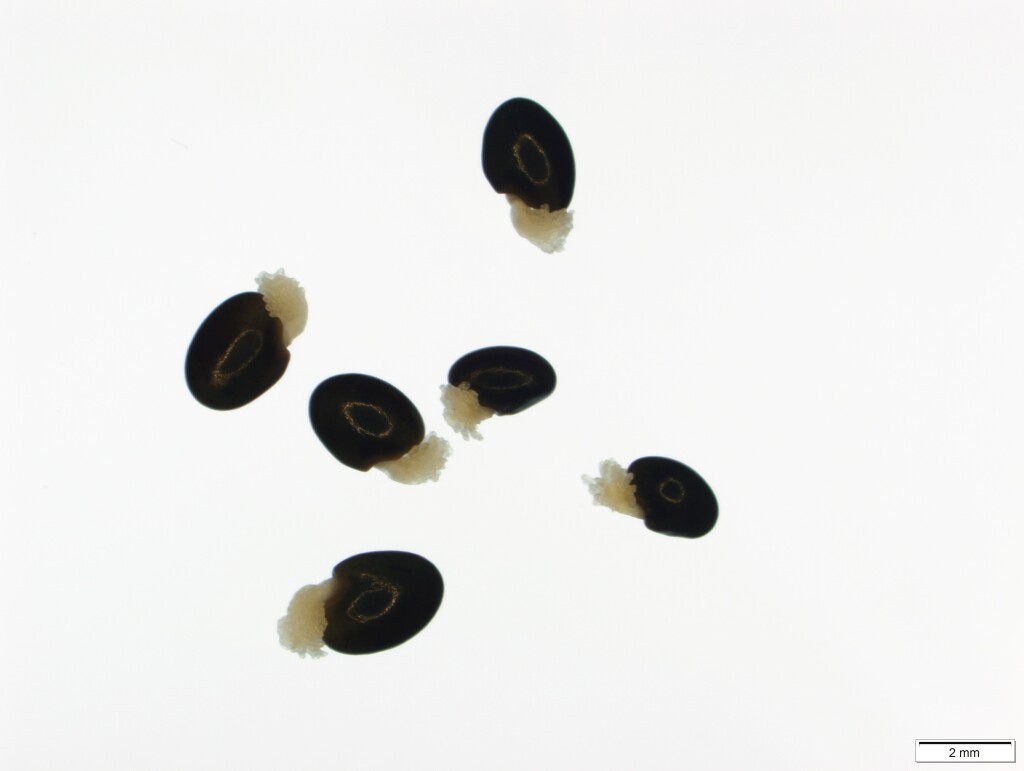Pultenaea linophylla
Schrad. Halo Bush-peaSparsely branched, wiry, spreading shrub to 40 cm high; stems terete, hairy. Leaves alternate, linear to elliptic, 4–14 mm long, 2–4 mm wide, flat or slightly concave; apex obtuse; upper surface glabrous, darker than lower; lower surface hairy; midrib prominent; margin slightly recurved; stipules triangular to lanceolate, 1–1.5 mm long, very dark brown. Inflorescence a small, head-like cluster of 4–6 flowers terminating short lateral branches; bracts broadly ovate, 2–3 mm long, apex torn or appearing 3-lobed, midrib or central linear lobe hairy; calyx 5–6 mm long, lobes slender, acute, tube glabrous to hairy, lobes densely hairy; bracteoles attached near centre of calyx tube, linear, 2–2.5 mm long, densely hairy; standard 5–6 mm wide; ovary and base of style hairy. Pod flat, hairy, exserted from calyx. Flowers Sep.–Oct.
VVP, GipP, EGL, EGU, HSF, HNF, HFE. Also Qld, NSW. Confined to lowland forests mostly in the east (e.g. Mallacoota, Wingan River area, Colquhoun state Forest near Nowa Nowa), with a few collections purportedly made further west, usually occurring on sandy, often granitic soil.
Victorian populations of Pultenaea linophylla were recognized by Wakefield as a distinct taxon (P. amoena), differing from the typical New South Wales form of P. linophylla in having shorter, broader, elliptic rather than cuneate leaves. Further study may show Wakefield to have been correct, but this treatment follows Thompson (1961) and Willis (1973) in retaining a broad concept of P. linophylla.
Corrick, M.G. (1996). Pultenaea. In: Walsh, N.G.; Entwisle, T.J., Flora of Victoria Vol. 3, Dicotyledons Winteraceae to Myrtaceae, pp. 765–793. Inkata Press, Melbourne.
 Spinning
SpinningThompson, J. (1961). Pultenaea. Contributions from the New South Wales Herbarium, Flora Series 101(1): 46–79.
Willis, J.H. (1973). A handbook to plants in Victoria. Melbourne University Press, Carlton.

